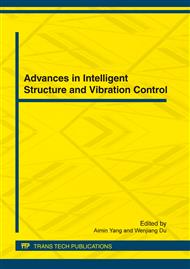[1]
Eurocode 8: Design Provision for Earthquake Resistance of Structures, Part 1. 1: General Rules-Seismic Actions and General Requirements for Structures[S]. DD ENV. (1996).
DOI: 10.3403/00752575
Google Scholar
[2]
Faccioli E., Tolis S. V., Borzi B., Elnashai A.S. and Bommer J.J., Recent developments in the definition of the design seismic action in Europe[C]. 11th European Conference on Earthquake Engineering, Paris, France, (1998).
Google Scholar
[3]
Zhong Rui. Reinforced concrete cantilever wall small block of high seismic performance studies[D]. Harbin Architectural University , 1995. 5.
Google Scholar
[4]
Brandon editor, Engineering seismic dynamics [M], Shanghai Science and Technology Press, (1980).
Google Scholar
[5]
Seismic Design of Buildings (GBJ50011-2010) [S]. China Building Industry Press, (2010).
Google Scholar
[6]
Yang Chunxia, etc., Experimental investigation on pseudo-dynamic test of concrete perforated brick masonry building model . Journal of Building Structures, 2006 , 27(3): 84-92.
Google Scholar
[7]
Sun Yeyang. High-rise building truss-layer model of elastic-plastic dynamic analysis . Journal of Tongji University, 1980. 1.
Google Scholar
[8]
Qin Wenxin, Liu Ji, Nonlinear dynamic analysis of the resilience of the inflection point in the fuzzy approach [J], Journal of Harbin University of Civil Engineering and Architecture, 1988. 1.
Google Scholar
[9]
Zhang Aiba, eds, Structural Vibration Mechanics [M], Tongji University Press, (1994).
Google Scholar
[10]
Furumura M. and Furumura T., Basin-induced surface waves in the Tokachi basin. Hokkaido[C]. Japan. Eleventh, World Conference on Earthquake Engineering, Mexico City, Mexico. (1996).
DOI: 10.4294/jpe1952.45.287
Google Scholar
[11]
Saragoni G. R., Lobos C. and Gomez-Bernal A., Site and earthquake mechanism effect on Earthquake Engineering, Paris, France, (1998).
Google Scholar
[12]
Teng Jialu other editor, Concrete Structure (II) - Seismic design of tall building [M], the China Construction Industry Press, (1997).
Google Scholar


